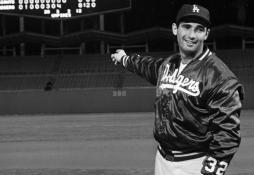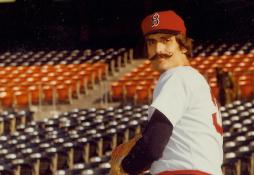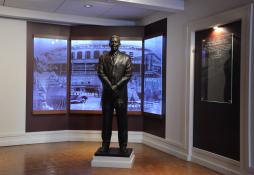- Home
- Our Stories
- #CardCorner: 1980 Topps Jesse Jefferson
#CardCorner: 1980 Topps Jesse Jefferson
Jesse Jefferson could have used a little luck.
In nine big league seasons, Jefferson was 39-81 – making him the only pitcher whose career began in the Live Ball Era (post 1919) with at least 100 decisions and a winning percentage of less than .335.
Even Hugh “Losing Pitcher” Mulcahy had a winning percentage of .336, 11 points higher than Jefferson.
But Jesse Jefferson also authored some of the greatest one-game performances of his generation – like on May 23, 1978, when he set a Blue Jays’ record with a 12-inning complete game victory.
It’s a team record that seems unlikely ever to be approached. And it demonstrated Jefferson’s pitching ability, which left him with a positive career WAR of 0.7 despite all the times he ended up on the wrong end of the box score.
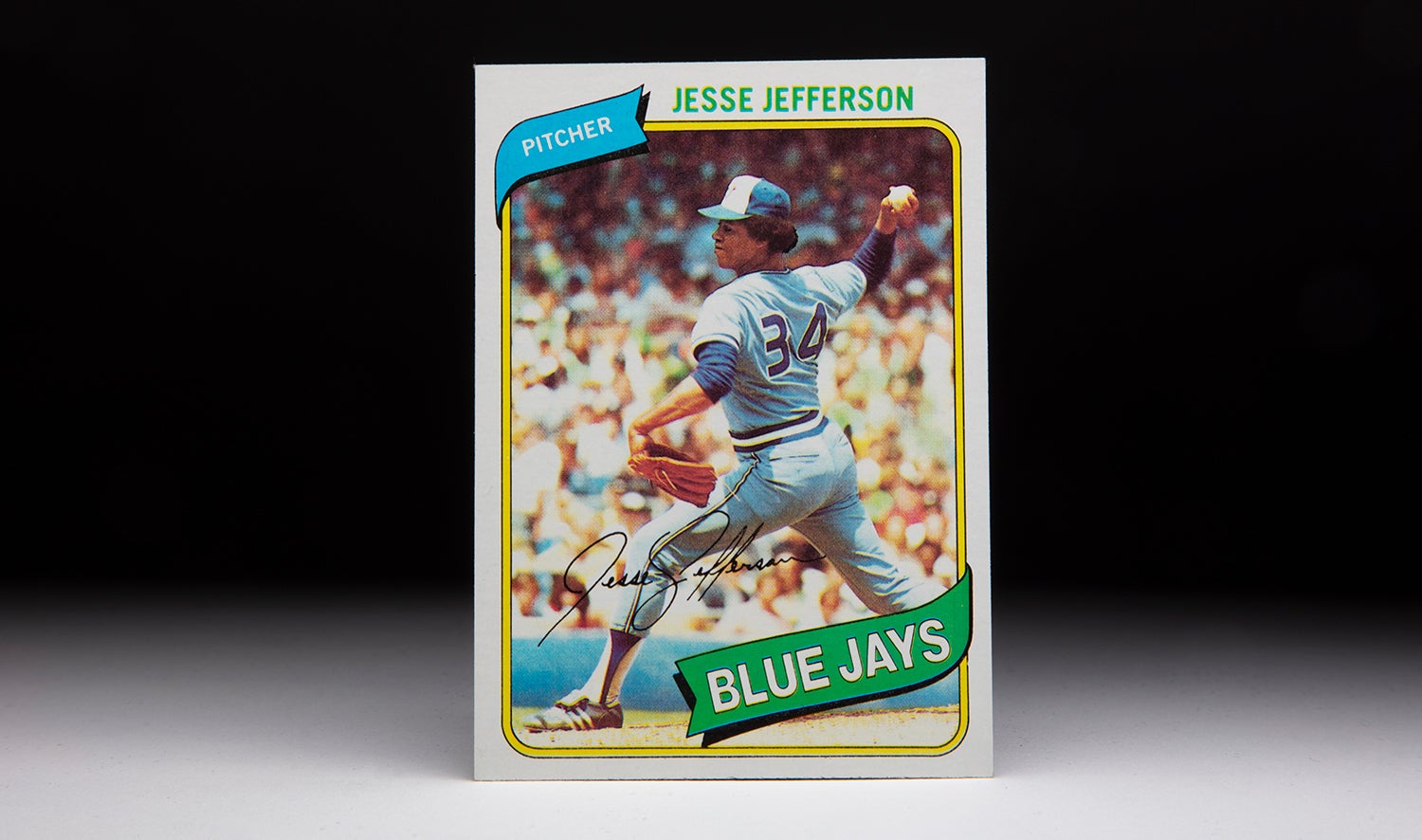
Born March 3, 1949, in Midlothian, Va. – a coal town that is now a Richmond suburb – Jefferson excelled on the mound at Carver High School, regularly posting double-digit strikeout games. In 1968, the Orioles took Jefferson in the fourth round of the June MLB Draft and sent him to Bluefield of the Appalachian League, where he went 3-7 with a 5.09 ERA while striking out 99 batters in 69 innings.
The next season, Jefferson went 0-7 in stints with Bluefield in Class A Miami but fanned 54 batters in 34 innings, earning a spot on the Orioles’ team in the Florida Winter Instructional League that fall.
In 1970, Jefferson spent his first year with a full-season team, going 8-16 with a 3.67 ERA for Class A Stockton of the California League. And while he walked 123 batters in 157 innings, he also struck out 177.
Following Jefferson’s three-hit, 15-strikeout performance on July 10, 1970, Orioles director of player development Don Pries said: “Jesse has all the pitches to make him a winner at the major league level.”
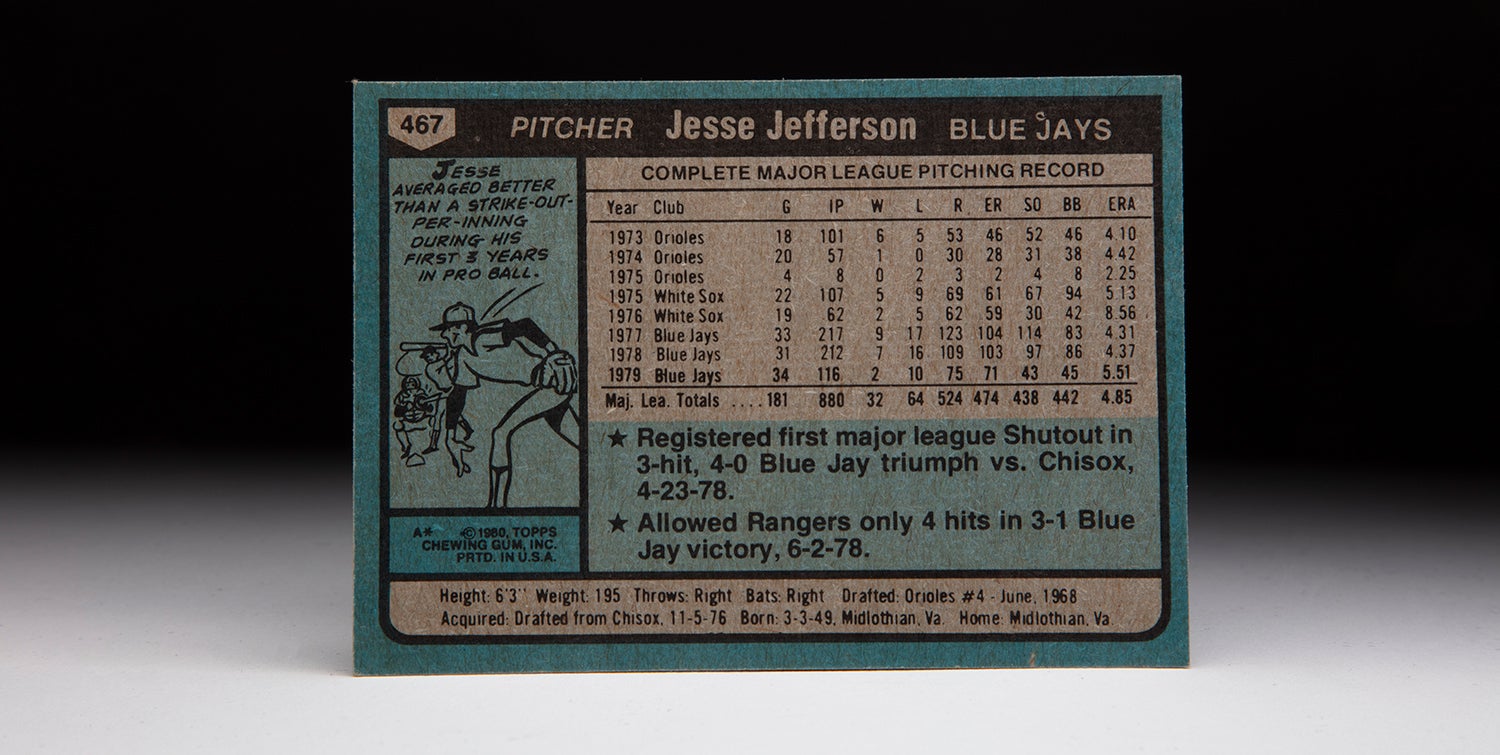
The Orioles won the World Series in 1970 and invited Jefferson to their Spring Training camp in Miami in 1971. He stayed with the big club through March 19, when the Orioles sent him to their minor league complex in advance of an assignment to Double-A Dallas-Fort Worth of the Dixie Association. Pitching for manager Cal Ripken Sr., Jefferson went 12-11 with a 3.45 ERA, striking out 150 batters in 172 innings.
Jefferson repeated his Spring Training work with the Orioles in 1972 and was assigned to Double-A Asheville, where Ripken Sr. was again his manager. Jefferson went 5-4 with a 3.30 ERA in 11 starts before being promoted to Triple-A Rochester, where he was 6-3 with a 2.45 ERA in 17 starts.
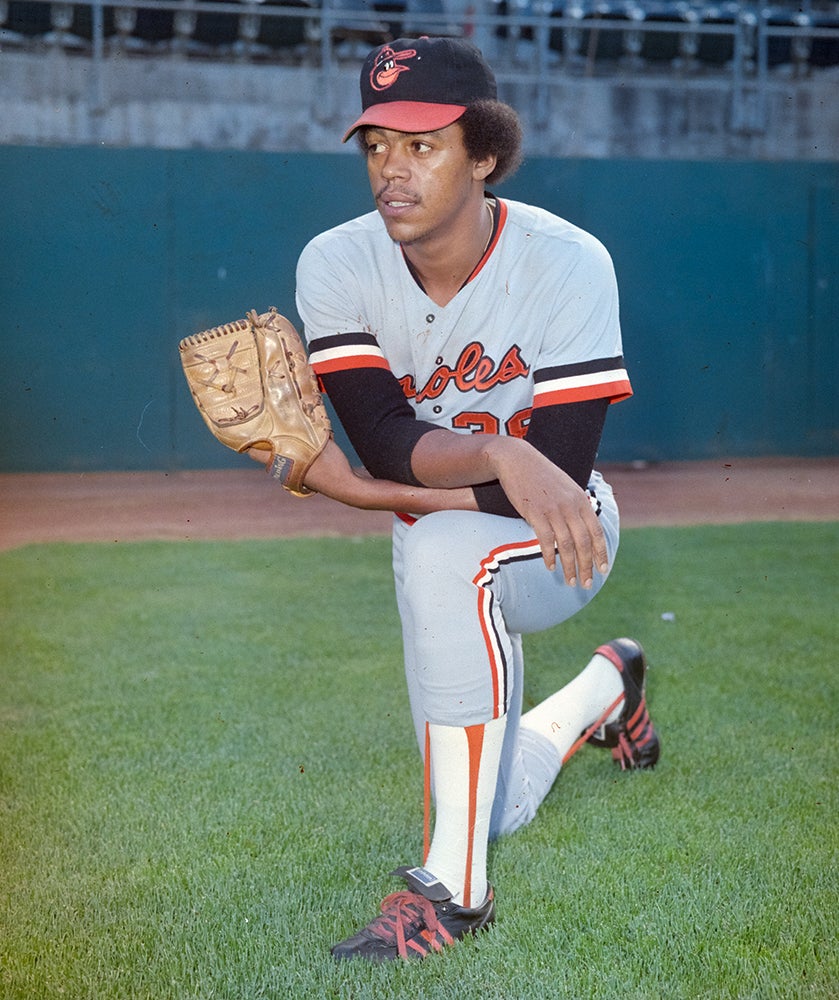
After pitching in Venezuela that winter, Jefferson reported to Spring Training in 1973 knowing that he had a real chance to pitch in the big leagues that year. After going 6-2 in 10 starts with Rochester to start the season, Jefferson was brought up to Baltimore in June and made his big league debut on June 23 against the Red Sox, pitching 10 innings of one-run ball and earning the win in a 2-1 Baltimore victory.
In the expansion era (post 1960), only three other starting pitchers have worked at least 10 innings in their first MLB games: Ron Taylor worked 11 innings for Cleveland on April 11, 1962; Danny Cox pitched 10 shutout innings for the Cardinals against the Phillies on Aug. 6, 1983; and Allan Anderson pitched 10 innings for the Twins on June 11, 1986. But Jefferson is the only one of four who recorded a win.
Jefferson would make 15 starts among his 18 appearances with the Orioles in 1973, going 6-5 with a 4.11 ERA while helping Baltimore rocket to a 17-2 stretch in August that powered the team to the AL East title.
“We went to Jesse Jefferson and Don Hood (during a mid-season rough patch),” Orioles manager Earl Weaver told the Rochester (N.Y.) Democrat and Chronicle. “They kept us out of disaster.”
But with veterans Jim Palmer, Dave McNally and Mike Cuellar lined up for the ALCS vs. Oakland, Jefferson was not used in the postseason as the Orioles lost to the A’s in five games.
Jefferson was one of nine pitchers on Baltimore’s Opening Day roster in 1974. But Jefferson was plagued by inconsistency throughout the year, going 1-0 with a 4.40 ERA in 20 games for an Orioles team that featured a deep and veteran staff. Though Palmer was injured for part of the year and made only 26 starts, the trio of Ross Grimsley, McNally and Cuellar combined to make 114 starts and pitch 824 innings – leaving little work for pitchers like Jefferson.
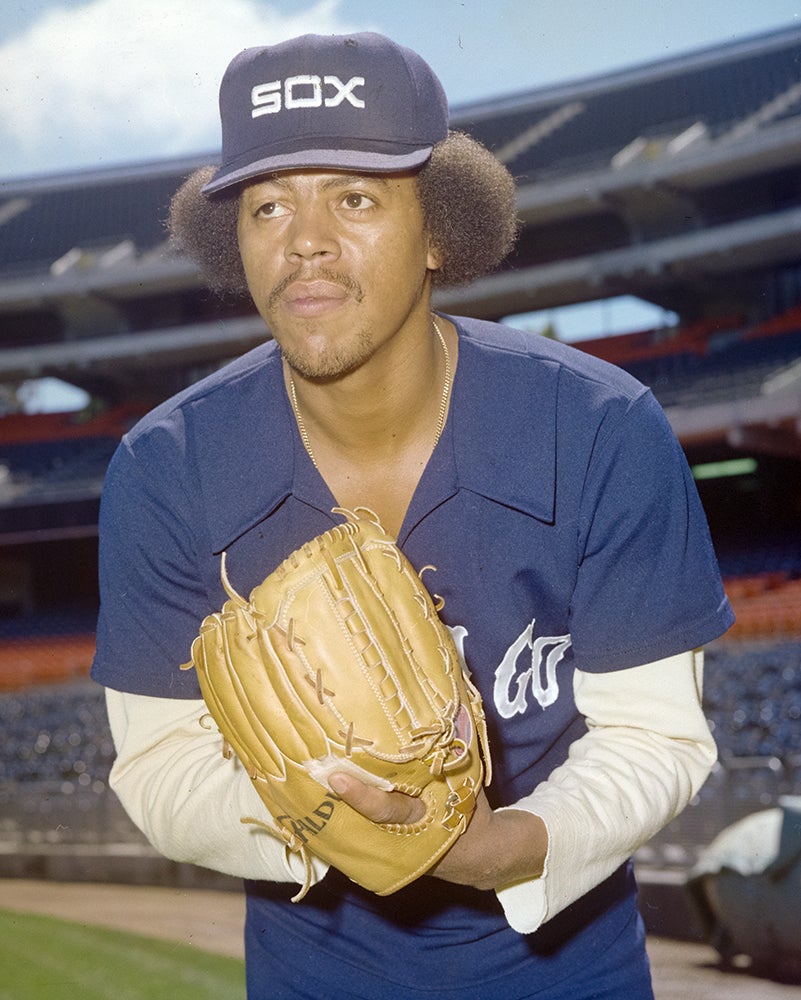
After appearing in just four games in relief in the first two-and-a-half months of the 1975 season, Jefferson was traded to the White Sox for Tony Muser on June 15. Jefferson’s name had been bandied about for weeks in trade rumors, with potential deals having him going to the Angels for Joe Lahoud and the Twins for Glenn Borgmann.
The White Sox immediately put Jefferson into their starting rotation and had him work extensively with pitching coach Johnny Sain. He went 5-9 with a 5.10 ERA in 21 starts for Chicago but walked 94 batters in 107.2 innings.
The White Sox changed managers in 1976, replacing Chuck Tanner with Paul Richards – an old-school skipper who believed in getting the most out of his starting rotation. As such, Richards moved bullpen aces Goose Gossage and Terry Forster into the rotation and found little work for Jefferson.
Jefferson did not appear in a game that year until May 17, though he did pitch in an exhibition game against the White Sox’s Triple-A affiliate, the Iowa Oaks, on May 12 in what Richards deemed an audition for the rotation following the season-ending knee injury to ace Wilbur Wood three days earlier. Jefferson made three largely ineffective starts in late May before returning to the bullpen for most of the year, finishing with a 2-5 record and 8.52 ERA in 19 games while often being the target of critiques by Richards.
But on Nov. 5, 1976, Jefferson’s career got a boost when the Blue Jays selected him with the 47th pick in the Expansion Draft.
“I don’t care what Richards may have said about me,” Jefferson told United Press International during the 1977 season. “My mind was really screwed up last year and I prayed to get (to Toronto). Coming to an expansion club was the best thing that ever happened to me in my career.”
Jefferson started the Blue Jays’ fourth regular season game in 1977 and took regular turns in the rotation for the rest of the year, going 9-17 with a 4.31 ERA in 217 innings over 33 starts. His numbers were remarkably similar in 1978 as he posted a 7-16 mark with a 4.38 ERA over 211.2 innings.
“He was a thrower last year,” Blue Jays manager Roy Hartsfield told the Toronto Star during the 1978 season. “But he’s a pitcher now.”
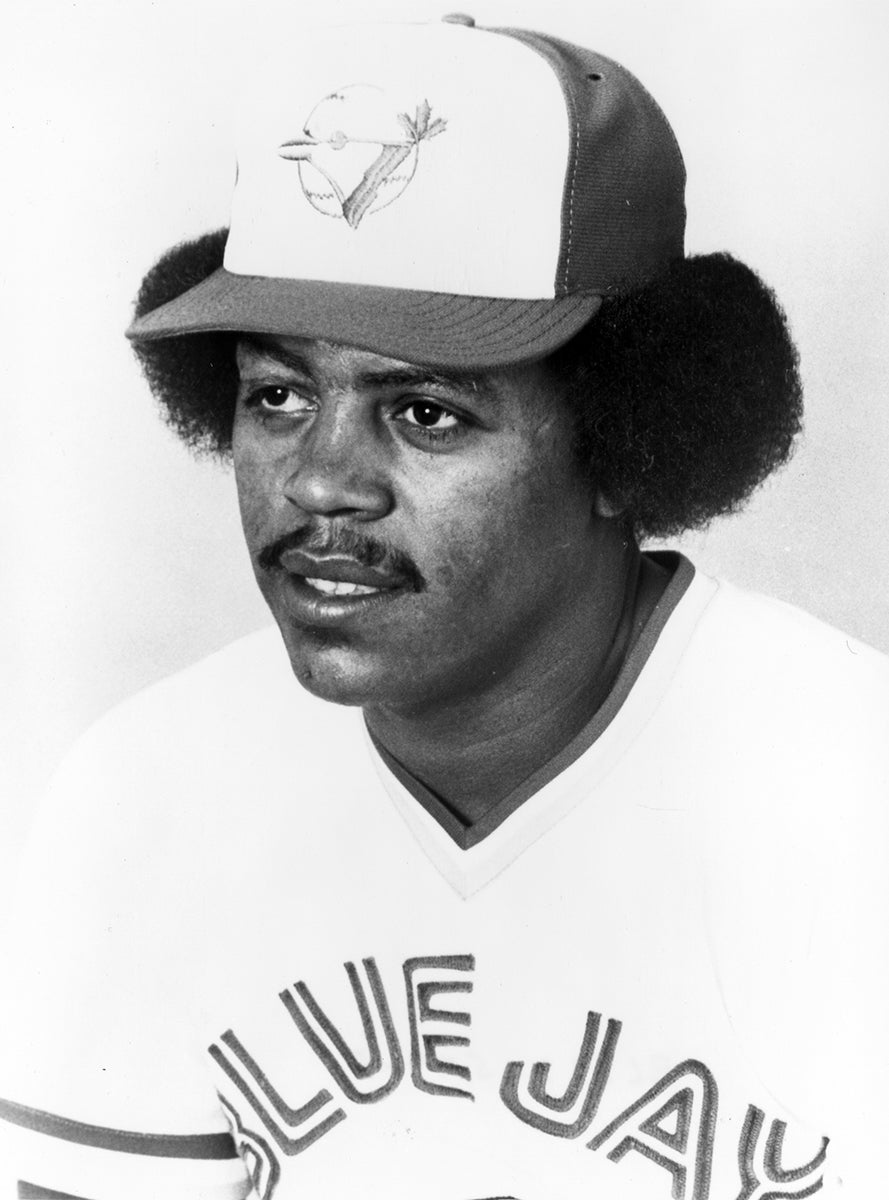
His won-loss record didn’t show it, but Jefferson’s value to an expansion team was obvious. In both 1977 and 1978, Jefferson – by serving as an innings eater – posted Wins Above Replacement totals of 2.0 and 2.3, respectively.
“Last year was really my first year as a regular starter,” Jefferson told the Toronto Star after tossing a complete game four-hitter against Cleveland on July 2, 1978. “It takes time to get to know the hitters, but now I’ve got a pretty good idea how to pitch to them.”
Jefferson carried a respectable 7-9 record into mid-August before recording losses in seven of his last eight outings.
Hartsfield aimed to take advantage of Jefferson’s veteran savvy by converting him into the team’s closer in 1979. But Jefferson was well known for needing a lengthy warmup period, and – despite working with pitching coach Bob Miller, a veteran of 595 big league relief appearances, all spring – Jefferson struggled in his new role.
After a rough April that saw Jefferson fail to record a win or save, the Blue Jays moved him back into the rotation. He was working on a 1-7 record through June when he returned to the bullpen, finishing the year with a 2-10 record and 5.51 ERA.
Jefferson began the 1980 season in the bullpen before returning to the rotation in late April. On May 16, he outdueled Oakland’s Mike Norris over 11 innings, picking up a 1-0 victory when Roy Howell singled in Bob Bailor in the bottom of the 11th. Jefferson permitted just four walks and four hits over 11 innings while striking out 10 Oakland batters.
Since that day, no big league pitcher has recorded an outing with at least 11 innings pitched, no runs allowed and 10-or-more strikeouts. Only 45 such games have occurred in MLB history.
“You gotta give (Jefferson) credit,” Norris told the San Francisco Examiner. “It was probably the best game he ever pitched in his life.”
Jefferson struggled for most of the rest of the season, however – save for a two-hit shutout over the Mariners on July 27. With a 4-13 mark and a 5.47 ERA on Sept. 11, Jefferson was placed on waivers and claimed by the Pirates.
He made one start for Pittsburgh, recording a win over the Cubs on Oct. 3 – his first appearance since Sept. 1 – after allowing one run over 6.2 innings.
“I’d like to stay here, but I don’t know what their plans are for me,” Jefferson told the Associated Press about his time in Pittsburgh. “I like the ballclub. It’s a loose ballclub.”
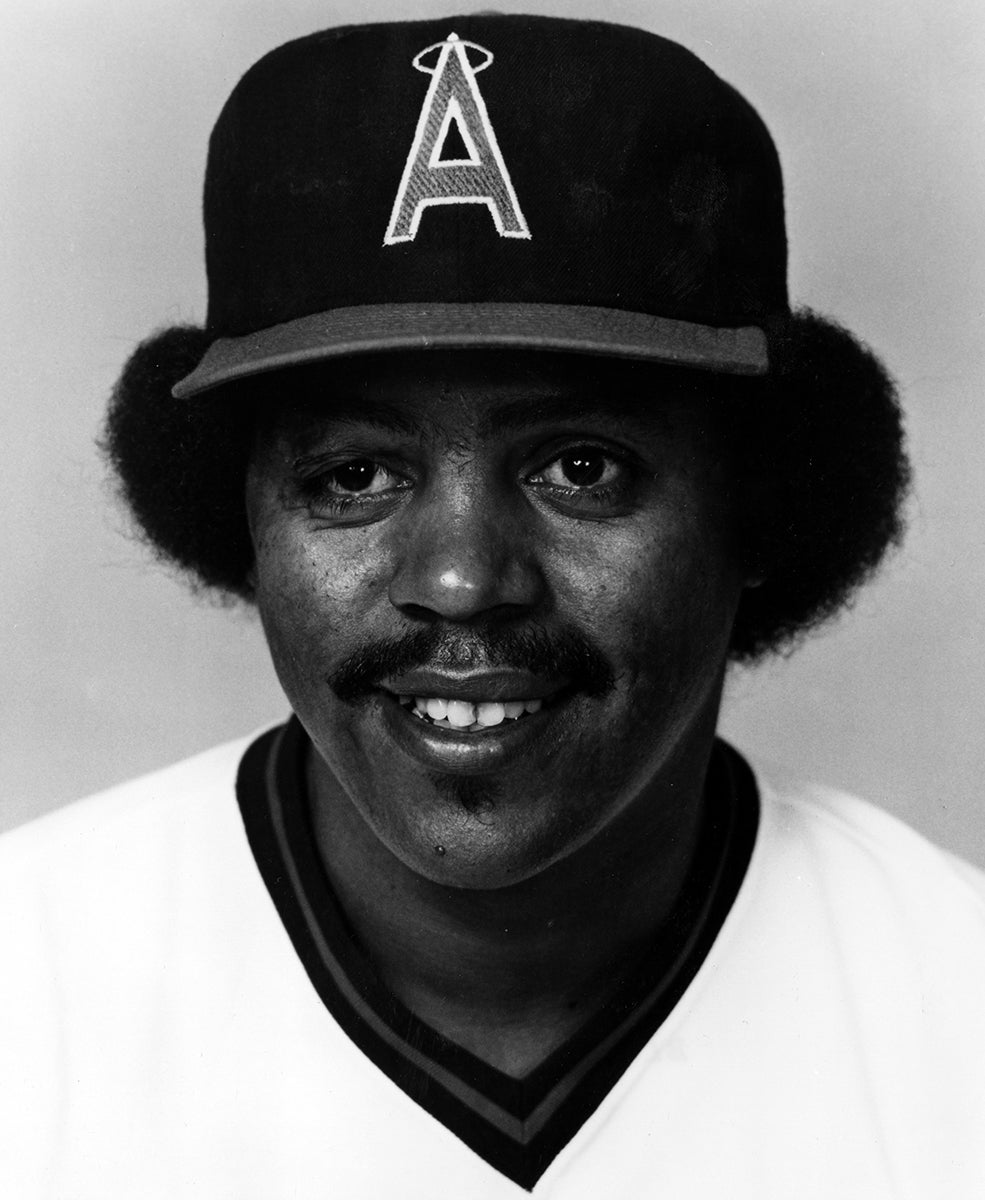
Jefferson became a free agent after the season ended.
“Jefferson has a fine arm,” Pirates general manager Harding Peterson told the Pittsburgh Press. “We just have too many pitchers numbers-wise.”
Jefferson signed with the Angels on Jan. 26, 1981, and spent that season as a spot starter and reliever – going 2-4 with a 3.62 ERA over 77 innings. He signed with the Orioles just before Spring Training 1982, but his return to Baltimore ended unsuccessfully when the Orioles released him on April 1.
Jefferson would play in the Mexican League in 1982 and 1983 and briefly pitched for the Angels’ Triple-A team in Edmonton in the latter season – but never again appeared in the big leagues.
Jefferson returned to Midlothian, Va., following his career and passed away on Sept. 8, 2011. And despite his 39-81 record and 4.81 ERA, Jesse Jefferson left more than his share of highlights on the diamond.
“The scouting report on him is that he’d pitch a good game…then be erratic in his next game,” Pirates general manager Harding Peterson told the Pittsburgh Press after Jefferson’s only game with Pittsburgh. “He just hasn’t been consistent. But if he ever gets it all together, somebody might wind up with a good pitcher.”
Craig Muder is the director of communications for the National Baseball Hall of Fame and Museum



